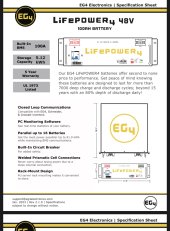John Frum
Tell me your problems
- Joined
- Nov 30, 2019
- Messages
- 15,233
Is this cells or batteries?Update: My friend contacted EVE (as we currently have a combined order in for 120 LF280Ks) and asked what the prospective fault current is. Their immediate response was 2000-4000A.
Perhaps 2000 amps is empty and 4000 amps is full?



